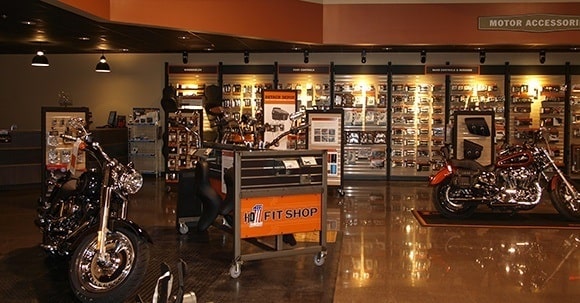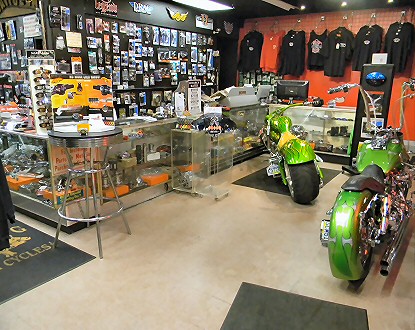Must-Have Motocross Gear: Boost Your Riding Experience Today
Must-Have Motocross Gear: Boost Your Riding Experience Today
Blog Article
Comprehending the Important Components of a Motorbike: A Comprehensive Overview for Fanatics
For motorcycle enthusiasts looking to elevate their riding experience and guarantee their bikes run efficiently, comprehending the vital components of a bike is extremely important. Each component, from the engine's intricate functions to the critical role of the braking mechanisms, not just impacts performance yet likewise safety and comfort.
Engine Elements

The camshaft plays a critical role in regulating the timing of the engine's shutoffs, guaranteeing the exact opening and closing essential for effective fuel and air intake, in addition to exhaust expulsion. This timing is important to keeping optimal engine efficiency and efficiency. Furthermore, the carburetor or gas shot system, relying on the bike version, is accountable for blending air with fuel in the appropriate proportion for combustion.
The air conditioning system, either air or liquid-based, works to maintain the engine's temperature within operational restrictions, avoiding overheating and guaranteeing longevity - motocross parts nz. Each part, diligently made and incorporated, adds to the seamless procedure of the engine, specifying the motorbike's power outcome and general performance
Transmission System
Integral to the bike's capability, the transmission system makes sure effective power transfer from the engine to the wheels. This system comprises several critical parts, including the clutch, gearbox, and last drive, each playing an essential duty in equating the engine's power into activity. The clutch, normally operated by a hand bar, offers to disengage the engine and engage from the transmission, permitting smooth equipment changes and controlled acceleration.
The gearbox, often described as the transmission appropriate, includes a set of gears that bikers can manually move with to change the bike's speed and torque output. These gears are organized in a sequence that enables the bike to speed up efficiently and maintain ideal engine performance throughout various speeds. Many motorbikes make use of a sequential gearbox, requiring the biker to change gears in an established order.
Braking Systems
While understanding the transmission system is crucial to utilizing a motorbike's power, just as essential is the capacity to control and quit that power successfully, which is where stopping systems enter into play. Brakes are essential for safety and security and performance, giving the biker with the necessary control to browse different terrains and conditions. Usually, motorbikes include 2 kinds of braking systems: disc brakes and drum brakes.
Disc brakes are extra prevalent in contemporary motorbikes as a result of their exceptional efficiency. They include a brake disc, caliper, and pads. When turned on, the caliper squeezes the brake pads against the rotating disc, transforming kinetic energy into warm, therefore slowing down the wheel. This system supplies better warm dissipation, constant efficiency, and enhanced stopping power, specifically in wet problems.
Alternatively, drum brakes, though less typical, are still located in some motorbikes. They function by pressing brake footwear against the internal surface area of a drum affixed to the wheel. While normally less efficient in heat dissipation and stopping power, drum brakes are less complex and more affordable.
Comprehending these braking systems' nuances permits motorcyclists to preserve their motorcycles properly and value the design that makes sure risk-free and effective quiting.
Suspension and Guiding
Suspension and guiding systems are vital components that substantially affect a bike's handling and adventure convenience. The shock absorber, containing forks at the front and shock absorbers at the rear, soaks up road abnormalities, improving stability and control. Front forks, upside down or normally telescopic, compress and rebound to reduce impacts, while back shock absorbers maintain tire call with the road, critical for grip and security.
Steering, centered around the handlebars, attaches the motorcyclist to the motorcycle's directional control. The guiding head bearings guarantee smooth procedure, enabling specific maneuverability. Correct positioning and upkeep of these bearings are essential for predictable steering feedback and visit site decreasing rider exhaustion.
The suspension's adjustability is one more critical facet; preload, damping, and rebound setups allow customization to match different riding problems and styles. This adaptability is crucial for optimizing efficiency, whether browsing urban roads or taking on rugged tracks. Technologies like electronic suspension systems supply real-time adjustments, boosting trip high quality throughout diverse terrains.

Electric Solutions
After making certain a controlled and smooth trip through reliable suspension and guiding systems, interest turns to the electrical systems, a critical facet of modern motorcycles. These systems play a vital duty not just in beginning the engine yet additionally in powering numerous elements that improve the performance and safety and security of the motorbike.
At the heart of a motorbike's electrical system is the battery, which stores electrical energy needed for starting the engine and powering complementary systems - motocross parts nz. The alternator or generator, coupled with the rectifier-regulator, makes certain the battery continues to be charged while the motorcycle is in operation, transforming mechanical power into electrical energy and maintaining voltage levels
The ignition system, an additional vital component, is liable for igniting the air-fuel mixture in the engine's cylinders. Modern motorbikes usually make use of an electronic ignition system, using greater effectiveness and dependability contrasted to traditional systems.
Lighting systems, motorcycle shop near me consisting of headlights, tail lights, and indications, are also important, guaranteeing visibility and security for the biker. Added digital parts such as sensors, control units, and presents add to innovative functions like fuel injection management, anti-lock stopping systems (ABDOMINAL MUSCLE), and electronic dashboards, further boosting the riding experience.
Verdict
A complete comprehension of a motorbike's important elements, consisting of the engine, transmission system, braking systems, suspension, guiding, and electrical systems, is important for fanatics aiming to maximize convenience, security, and efficiency. Proficiency of these elements enables for informed choices regarding maintenance and upgrades, eventually boosting the riding experience. By incorporating this knowledge, bikers can ensure their motorbikes run at peak effectiveness and dependability, consequently maximizing both enjoyment and durability of their lorries.
For bike fanatics looking to boost their riding experience and guarantee their bikes look at more info run efficiently, understanding the necessary parts of a motorbike is extremely important.Essential to the motorbike's performance, the transmission system guarantees efficient power transfer from the engine to the wheels.While understanding the transmission system is vital to taking advantage of a motorbike's power, just as important is the capacity to regulate and quit that power efficiently, which is where braking mechanisms come right into play. Commonly, bikes include two types of stopping systems: disc brakes and drum brakes.
A comprehensive comprehension of a bike's crucial parts, including the engine, transmission system, braking devices, suspension, steering, and electrical systems, is indispensable for fanatics aiming to optimize comfort, security, and performance.
Report this page